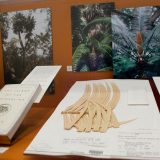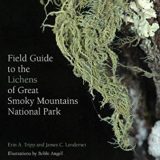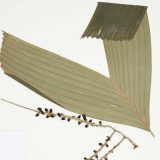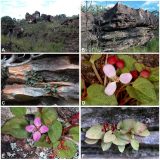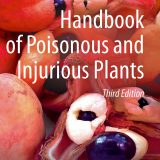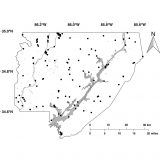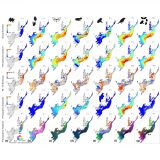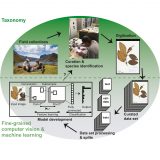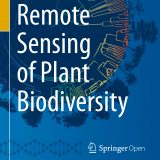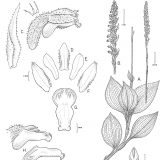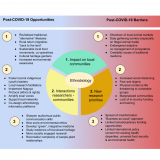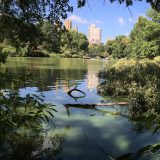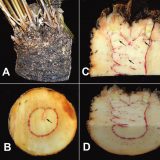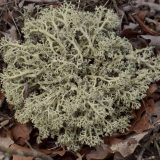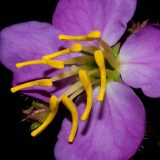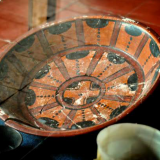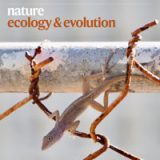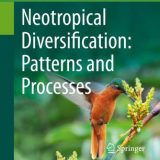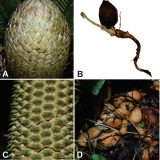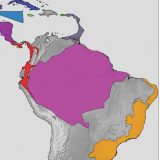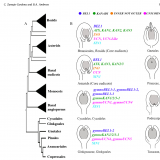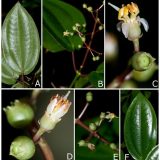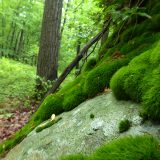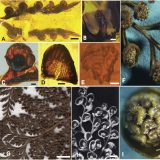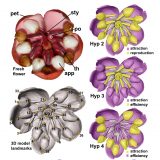NYBG curator James Lendemer maintains an active program of research and education focused on lichens, which are symbiotic fungi that are often considered the equivalent of corals on land. Lendemer’s lichen research focuses on understanding the biodiversity of these organisms in North America and also developing and implementing conservation strategies that will safeguard biodiversity for future generations.
Follow these links for recent publications related to lichen biodiversity and conservation:
Caloplaca edwardiana (Teloschistaceae, Lichenized Ascomycetes), a new crustose species from the southern Appalachian Mountains of eastern North America
Description of a new narrowly endemic species names in honor of E.O. Wilson
(Senior Author: Graduate Student Jordan Hoffman)
The Bryologist 123(2): 255–234, July 10, 2020
The Bryologist Abstract
Field Guide to the Lichens of Great Smoky Mountains National Park
A 500 page all-in-one resource for Park exploration, with lichen distribution maps, tools for identification, vivid photographs and illustrations, and field notes.
University of Tennessee Press, March 2020
Amazon Book Information
A revision of Hypotrachyna subgenus Parmelinopsis (Parmeliaceae) in eastern North America
Revision of a group of charismatic macrolichens, with descriptions of three new species and one species that is reported from North America for the first time.
The Bryologist 123(2), 265-332, 10 July 2020
The Bryologist Abstract
Combing for Beach Broccoli: Surveys of the endemic macrolichen Cladonia submitis determines endangered status under IUCN guidelines
Documents the decline of a conspicuous macrolichen endemic to the Mid-Atlantic coast of eastern North America, and suggests and IUCN conservation status as Endangered.
(Senior Author: Graduate Student Jordan Hoffman)
Biodiversity and Conservation, May 12, 2020
Biodiversity and Conservation Abstract
Bacidia thiersiana (Ramalinaceae), a new species with lobaric acid widespread in southeastern North America
Description (with illustrations) of a new species from scattered locations throughout southeastern North America, including the southern Appalachian Mountains and Coastal Plain.
The Bryologist 123(1): 39-47, January 13, 2020
The Bryologist Abstract

